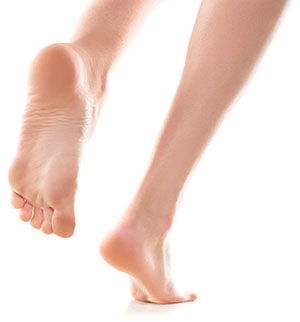Toetally Awesome
This article is from Answers magazine, November–December 2017
Toes are the unsung heroes of human motion. Most people don’t even pay attention to them unless they stub them on the furniture, but the important jobs they do every day highlight God’s careful design. Consider all the times you’ve stumbled and managed to catch yourself before falling. Without your thinking about it, your toes spread out to stabilize you. Or they stiffened to give you that extra leverage you needed to regain equilibrium.

- Toes help you grip the ground as you walk. Have you ever run barefoot on a beach? Look at the footprints you left behind. As the sand shifted under your weight, your toes dug in so you wouldn’t fall. Like cleats on soccer shoes, they give you extra traction.
- Toes allow you to stand straight. Think of your body as a 150-pound statue without any base to balance it. The slightest touch would knock it over. But your big toe, little toe, and heel make a stable, three-point base. And your toes constantly adjust position to counterbalance your shifting weight.
- Your toes also make you faster! As you walk, your weight shifts forward onto your toes. The extra spring from your toes makes your steps longer and helps you walk or run faster. Longer toes help sprinters run fast over short distances. Shorter toes save energy over a long-distance run.
- Toes reduce stress on your bones. Your shin and several bones in your lower back and feet, including your toes, hold you up. Without your toes, your other bones and muscles would have to do all the work, and they would tire much more quickly.
See for Yourself . . .
Toes and Balance
Stand up barefoot.
Have someone push you, gently at first, and then harder until you have to take a step to keep from falling.
Now repeat the experiment, this time standing only on your heels. How much easier was it to push you off balance?
Toes and Speed
Walk barefoot across a long room and back twice.
Count your steps as you walk and remember this number.
Curl your toes off the floor and walk back and forth again.
Count your steps. Compare this number to the first.
Is it a different number than before? Did using your toes let you take fewer steps?
- © 2025 Answers in Genesis
- Privacy Policy
- Contact
- About
